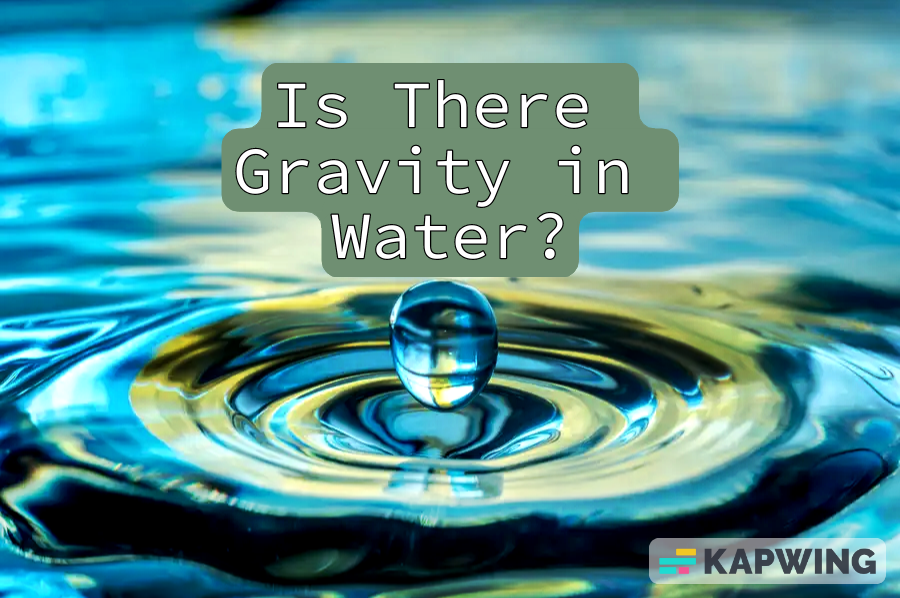
Gravity is a fundamental force that governs the interactions between objects in the universe. It is responsible for keeping our feet on the ground and planets in their orbits around the sun. However, when it comes to bodies of water, such as oceans, rivers, and lakes, there is a common question that arises: Is there gravity in water? In this article, we will explore the nature of gravity and its effects on water, providing a detailed analysis of this intriguing topic.
Understanding Gravity
Before diving into the question at hand, it’s important to have a clear understanding of what gravity is. Gravity is a force that attracts objects with mass towards each other. The strength of this force depends on the masses of the objects and the distance between them. Sir Isaac Newton first formulated the laws of gravity, and later, Albert Einstein’s theory of general relativity provided a more comprehensive explanation.
Gravity and Water
Now, let’s explore how gravity affects bodies of water. Water, like any other object, has mass, and thus, it is subject to the force of gravity. Gravity pulls water downwards, causing it to seek the lowest possible point. This is why water always flows downhill when not contained by a vessel or channel.
The Shape of Water
Gravity plays a significant role in determining the shape of bodies of water. On a large scale, such as oceans, gravity causes water to settle into a roughly spherical shape. The force of gravity acts uniformly on all parts of the water, pulling it towards the center of the Earth. This results in the curvature of the Earth’s surface and the formation of oceans and seas.
However, on a smaller scale, the shape of water can vary depending on the surrounding conditions. For example, when water is contained in a glass or a cup, it takes on the shape of the container. Gravity still acts on the water, but the container’s walls exert an opposing force that prevents the water from flowing freely. This equilibrium between the force of gravity and the container’s resistance allows the water to maintain its shape.
Floating and Buoyancy
Another interesting aspect of gravity in water is its influence on objects placed within it. When objects are submerged in water, they experience a buoyant force that counteracts gravity. The buoyant force is caused by the pressure difference between the top and bottom of the submerged object. This force pushes the object upward, effectively reducing its weight.
Archimedes’ principle, discovered by the ancient Greek mathematician Archimedes, explains this phenomenon. According to the principle, the buoyant force exerted on an object submerged in a fluid is equal to the weight of the fluid displaced by the object. This principle explains why objects that are less dense than water, such as wood or certain types of plastic, float on its surface.
Evaporation role in water gravity
The presence of gravity in water is also integral to the water cycle, a continuous process of evaporation, condensation, and precipitation. When water evaporates from the surface of oceans, lakes, and rivers, it rises into the atmosphere. Gravity plays a crucial role in the condensation of water vapor into clouds and the subsequent precipitation. The gravitational force pulls the water droplets in the clouds downward, resulting in rainfall, snowfall, or other forms of precipitation that replenish bodies of water on Earth’s surface.
Currents
Ocean currents, which circulate water on a global scale, are also influenced by gravity. The gravitational pull of the Moon and the Sun generates tidal forces that create tidal currents. These currents contribute to the mixing of seawater and the redistribution of heat, nutrients, and marine life. Additionally, density differences within the ocean, caused by variations in temperature and salinity, result in gravitational forces that drive deep-water currents, such as the global thermohaline circulation.
The Role of Gravity in Water-based Activities
Gravity’s presence in water has a significant impact on various water-based activities. Swimming, for example, relies on the interaction between gravity and buoyancy. When we swim, we push against the water, creating a force that propels us forward. At the same time, gravity acts on our bodies, allowing us to maintain contact with the water and stay afloat.
Furthermore, the presence of gravity in water has implications beyond our planet. Scientists have discovered the existence of water on other celestial bodies, such as the Moon, Mars, and some moons of Jupiter and Saturn. The gravitational pull of these celestial bodies affects the behavior of water in unique ways. For example, on the Moon, where gravity is much weaker than on Earth, water behaves differently, forming less stable bodies due to reduced gravitational forces.
Furthermore, activities such as diving and surfing also heavily depend on gravity. Divers use gravity to accelerate their descent into the water, and surfers ride waves created by the gravitational pull of the moon on the Earth’s oceans.
Conclusion
In conclusion, gravity is undeniably present in water, shaping its behavior, determining its shape on different scales, and influencing the interaction between water and objects submerged within it. The combination of gravity and buoyancy affects the floating and sinking of objects, while the interplay between gravity and water plays a fundamental role in various water-based activities. Understanding these dynamics is crucial not only for scientific curiosity but also for practical applications in fields like engineering, navigation, and recreational water activities. Gravity’s omnipresence ensures that water remains a captivating element, constantly reminding us of the profound interconnectedness of natural forces.
